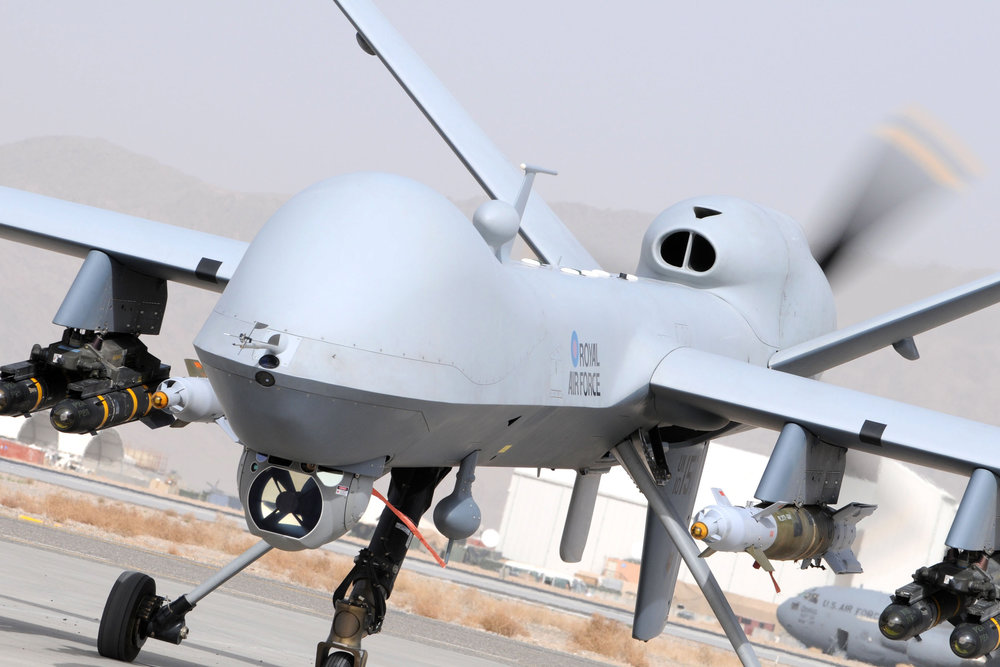
AI and machine learning are playing an increasingly important role in autonomous weapons.
Autonomous weapons, also known as “killer robots” or “lethal autonomous weapons systems (LAWS)”, are a form of military technology that can select and engage targets without the need for human intervention. AI and machine learning can give these weapons the ability to make important decisions in combat scenarios.
In recent years, the development of autonomous weapons has been accelerated by advances in AI and machine learning technology which allow machines to use data more efficiently. Machine learning algorithms are used to analyze large datasets and identify patterns that can reveal important information about potential targets.
Here is everything you should know about the role of AI and machine learning in autonomous weapons.
Table of Contents
AI and Machine Learning
What exactly is machine learning?
Machine learning is a form of artificial intelligence that allows machines to learn from data. This means that machines can identify patterns, detect changes in the environment and make decisions without requiring human intervention.
More specifically, machine learning algorithms are used to detect patterns and anomalies in large datasets. This is especially useful for autonomous weapons, as they need to be able to quickly identify potential targets and make decisions in a dynamic combat environment.
AI and Machine Learning for Autonomous Weapons

Source: pixabay.com
In terms of autonomous weapons, machine learning algorithms can be used to process large datasets which gives them more accurate target identification capabilities.
AI and machine learning can be used to increase the efficiency of autonomous weapons by providing them with a greater understanding of their environment and potential targets. AI algorithms can process data quickly, identify patterns, and provide accurate situational awareness.
This data is then used by autonomous weapons to decide what targets are appropriate and when they should engage.
In addition, AI can be used to determine the most efficient route or approach for the autonomous weapon to take in order to reach its intended target. This is especially important in situations where time is of the essence.
AI and machine learning can also help give autonomous weapons the ability to adapt on the fly by continuously analyzing data and adjusting their behavior accordingly.
AI and machine learning also provide autonomous weapons with greater autonomy by allowing them to learn from past experiences and data inputs. This means that they can become better at identifying targets over time, as well as more efficient in their approach to engaging those targets.
Machine learning has the ability to quickly analyze data and make decisions based on the information that it has been given. This allows autonomous weapons to respond much more quickly to threats, as well as being able to identify potential targets from a greater distance than humans can.
For instance, with an ar15 trigger, a machine learning algorithm could be used to detect when the trigger is pulled and adjust the firing pattern accordingly.
Besides all that, AI can also be used for predictive analytics, which can help autonomous weapons anticipate enemy movements and adjust their tactics accordingly.
Safety Concerns
Though AI and machine learning can provide autonomous weapons with increased efficiency and autonomy, there are safety concerns associated with the technology.
Autonomous weapons can make decisions and take action without human oversight or control, which can have unintended consequences. For instance, there is the potential for these weapons to make mistakes that cause unintended civilian casualties or other types of collateral damage.
Additionally, there are concerns over how autonomous weapons may be used by less responsible nations or actors and if they can be used in a way that violates international laws and conventions.
Finally, despite advances in machine learning technology, AI-controlled autonomous weapons still need to be tested and evaluated in realistic scenarios before they can be used operationally. This means that there is still a risk of error or malfunction which could lead to unintended casualties.
Therefore, it is vital to ensure that these weapons are developed with safety protocols in place to minimize the potential for accidents or mistakes.
Examples of Autonomous Weapons
There are several examples of autonomous weapons that have already been developed and deployed in the field. These include:
- Unmanned Aerial Vehicles (UAVs): UAVs can be used to scout an area and identify potential targets for engagement.
- Autonomous Ground Vehicles (AGVs): AGVs are unmanned ground vehicles that can be used to transport supplies or personnel, as well as engaging targets in combat.
- Autonomous Missile Systems (AMS): Autonomous missile systems are capable of autonomously locating, tracking, and engaging targets.
- Autonomous Mines: Autonomous mines are programmed to detect and engage enemy forces within a certain area.
- Autonomous Submarine Systems: Autonomous submarine systems can be used to track, locate, and engage targets in underwater environments.
All of these autonomous weapons utilize AI and machine learning in order to increase their situational awareness and accuracy. As technology continues to advance, autonomous weapons will become even more effective at engaging targets without increasing the risk of collateral damage or unintended casualties.
Ultimately, these technologies can help reduce human casualties and limit the amount of physical destruction caused by armed conflict. However, it is important to ensure that safety protocols are in place and that autonomous weapons are not abused by less responsible actors.
Only then can we reap the full potential of AI-controlled autonomous weapons.
How to Develop Autonomous Weapons
Developing autonomous weapons requires a team of highly skilled engineers and AI experts that can design, code, and test the weapons. The first step is to gather data from various sources such as video footage or radar readings that will be used to train an AI model.
This model must be able to accurately identify targets and distinguish them from non-targets in order to avoid collateral damage. It is also important to ensure that the AI model follows all applicable laws and conventions when making decisions.
Once the AI model is trained, it must be tested in a variety of scenarios to make sure it can accurately identify and engage targets as intended. This testing should include realistic simulations and field tests to make sure the autonomous weapon performs correctly in all situations.
Finally, safety protocols must be implemented to ensure that the AI model does not malfunction or make mistakes that could lead to unintended casualties.
Future of AI and Machine Learning in Autonomous Weapons

Source: pixabay.com
AI and machine learning have the potential to revolutionize the way that autonomous weapons operate. Through increased efficiency, accuracy, and autonomy, these technologies can help make autonomous weapons more capable of responding quickly and accurately in a wide variety of combat scenarios.
However, it is important to consider the safety implications associated with autonomous weapons, and to ensure that any development or deployment of these technologies is done with rigorous safety protocols in place.
AI and machine learning are likely to continue playing an important role in the development of autonomous weapons, but it is essential to keep safety considerations at the forefront of any progress made.
Conclusion
In conclusion, AI and machine learning are playing an ever-increasing role in the development of autonomous weapons. They provide these weapons with the ability to make decisions quickly and accurately, as well as being able to learn from their experiences.
By leveraging these technologies, autonomous weapons can become much more efficient and effective in combat scenarios.









